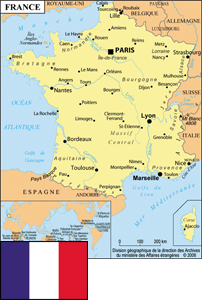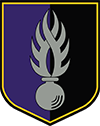
French National Gendarmerie
|
XIVe siècle Ministry of attachment: Ministère de l’Intérieur Workforce: 99 135 General manager: Général d’armée Richard LIZUREY Address: Direction générale de la Gendarmerie nationale 4 rue Claude Bernard Tél.: +33 1 84 22 29 99 Communication manager: Général Philippe GUIMBERT Website: www.gendarmerie.interieur.gouv.fr 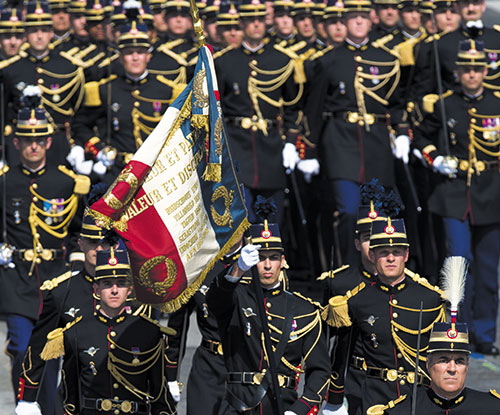
|
History
The National Gendarmerie is the heiress of the constabularies whose creation goes back to the Hundred Years’ War (1337-1457). Originally, these strengths organized in provostships, under the marshal’s orders, exercise their police and justice attributions only on the troops in campaign. The January 25th 1536 declaration widens the competence of these constabularies to the civilian population. They are gradually territorialized and become permanent during the XVIth century. Become ineffective, the constabularies provincial companies are suppressed in 1720. An edict and a prescription of March 1720 reorganize them completely. They militarize them by establishing a hierarchical organisation and a strict discipline. After the 1778 reform, all the companies are gathered in a unique corps: the constabulary, counting 4 114 men on the eve of the Revolution. By the law of February 16th, 1791, the institution becomes the National Gendarmerie.
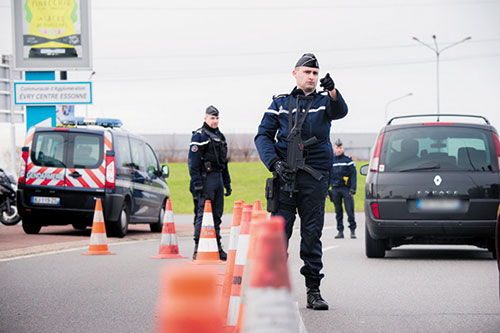
During the XIXth century, the gendarmerie changes several times its name according to the successive political systems. It participates in several military campaigns and in the colonial expansion. Its model is exported in Europe. Several organic texts strengthen its military structure, of which the law of Germinal 28th year VI (in April 17th 1798), the 20th October 1820 royal decree, the decree of March the 1st, 1854 and the 20th May 1903 decree in force throughout the XXth century. From 1914 to 1918, the Gendarmerie contributes to the general mobilization, forms provostships and ensures the internal security. During the Interwar period, it motorizes itself, is equipped with a direction and with a new force specialized in the maintenance of law and order. Under the Occupation, the Arm has to face the double pressure of the Vichy regime, committed in the collaboration, and the German occupation. After 1945, the Gendarmerie participates in the decolonization conflicts in Indochina, then in North Africa. The second half of the XXth century is marked by the specialization, the technicization and the increase of its work force. The law n° 2009-971 of August 3rd, 2009 connects the Gendarmerie to the Ministry of the Interior, but it keeps its military organization and for its staffs their military status
Organization
Central Organization
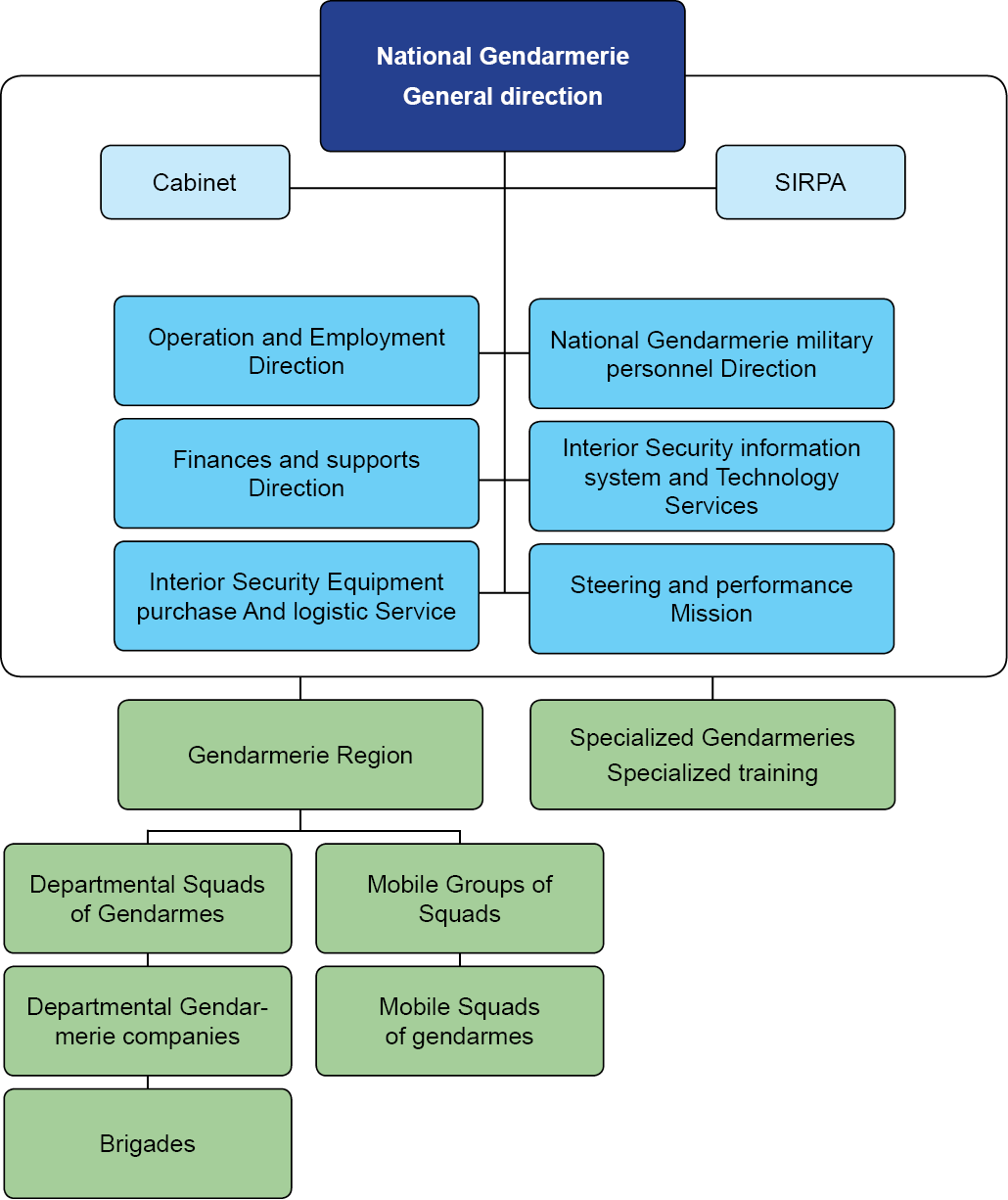
The National Gendarmerie General Direction (NGGD or DGGN in French), French National Gendarmerie Head-Office, implanted in Issy-les-Moulineaux, near Paris, includes in particular:
• a cabinet;
• three directions including each some divisions:
- the Employment and Operation Direction (EOD or in French DOE), articulated in 4 divisions:
. the Operational Anticipation Division,
. the Law and order and the road safety Division,
. the Criminal Investigation Department Division,
. the law and order and the protection Defence Division;
- the National Gendarmerie Military Staffs Direction (MGNSD or in French DPMGN), articulated in 4 divisions:
. Staff Management Division,
. Human Resources policy Division,
. Competences Division,
. Staff Support division;
- the Supports and the Finances Direction (SFD or in French DSF), articulated in 3 divisions:
. Administrative and financial division;
. Property and accommodation Division;
. Organization and staffs Division;
- 2 services are connected with the National Gendarmerie General Direction:
. the Interior Security Service of the purchase, the equipment and the logistics (ISSPEL or in French SAELSI),
. the Interior Security Technologies and Information Systems Service [ISTISS or in French STSISI].
The National Gendarmerie General Director also has at his disposal the National Gendarmerie General Inspectorate (NGGI or in French IGGN) established in 2009, the National Gendarmerie Air Force Command (NGAFC or in French CFAGN), the Republican Guard composed of a cavalry regiment and by two infantry regiments, the National Gendarmerie Intervention Force (NGIF or in French GIGN) and the Provost Gendarmerie.
Territorial organization
In mainland France:
• 22 regions of gendarmerie, created on July the 1st, 2005, which correspond to the administrative regions;
• 93 squads of departmental Gendarmes;
• 360 companies of departmental gendarmerie;
• 1 028 "communities of brigades";
• 614 autonomous territorial brigades;
• 17 squads of mobile Gendarmes;
• 108 platoons of mobile Gendarmes.
Overseas:
• the Overseas Gendarmerie Command (OGC or in French CGOM) is a general staff, which administers 4 283 personnels implanted overseas and in embassies, to whom are added the Mobile Gendarmes’ Platoons displaced overseas (18 MGP).
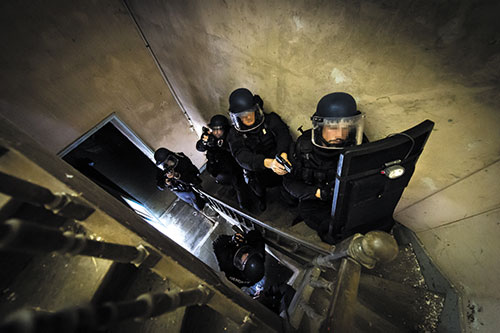
Specialized Gendarmeries
• The Nuclear Armaments Security Gendarmerie (NASG or in French GSAN).
• The Air Transports Gendarmerie (ATG or in French GTA).
• The Armament Gendarmerie.
• The Air Gendarmerie.
• The Maritime Gendarmerie.
Missions
Armed force invested with a mission of security and public peace, the National Gendarmerie combines all the characteristics of one "Force of continuity". Indeed, whatever are circumstances (peace, crisis or war), it ensures the continuity of the State action, on the entire French territory and to the armies.
It has in charge administrative, judicial and military missions.
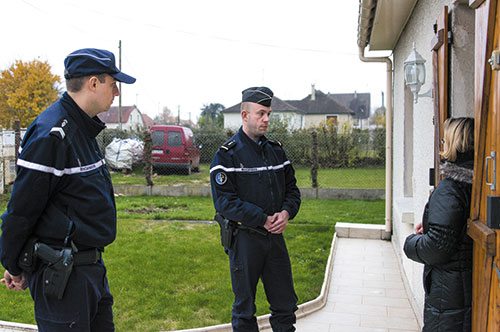
Staff
In 2015, the Gendarmerie total strength is composed of 99 135 men and women (recruited since 1983). These military staffs (officers, non-commissioned officers and volunteers) and civilians, divide up as follows:
• 6 215 Gendarmerie officers and 71 135 Gendarmerie non-commissioned officers (directly operational employments or requiring a professional experience based on the alternating between operational unit employments and force-staff employments);
• 506 officers and 4 626 non-commissioned officers of the administrative and support bodies (Employments imposing specific arrangements resulting from the military status - availability and mobility - or a top level specialization in administrative or technical domain);
• 19 officers from the armies (commissioners, engineers of the armament, liaison officers, etc.);
• 12 974 voluntary deputy gendarmes (operational or support employments that can be performed by staffs with either a directly exploitable professional qualification, or a short-term elementary training);
• 3 660 civilian staffs (supervision employments, experts or specialists in the administrative, logistic and technical domains, not subjected to the military status requirements).
Training institutions
Based in Rochefort-sur-Mer (Charente-Maritime), the National Gendarmerie Schools Command (NGSC or in French CEGN) manages and coordinates the whole activity of schools and training centres of the institution.
Schools:
• National Gendarmerie Officer’s School (NGIS or in French EOGN) in Melun (77);
• Châteaulin (29), Chaumont (52), Fontainebleau (77), Montluçon (03), Rochefort (17) and Tulle (19) Gendarmerie Schools.
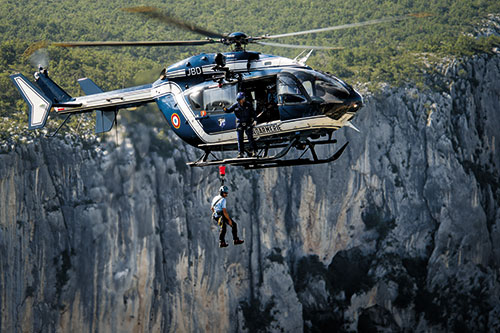
Training centres:
• Road Safety Training National Centre (RSTN or in French CNFSR) in Fontainebleau (77);
• Criminal Investigation Department National Training Centre (CIDNTC or in French CNFPJ) in Rosny-sous-Bois (93);
• Gendarmerie Nautical Instruction National Centre (GNINC or in French CNING) in Antibes (06);
• Gendarmerie Ski and Mountain Climbing Instruction National Centre (GSMCINC or in French CNISAG) in Chamonix (74);
• Gendarmerie Dog Unit Training National Centre (GDUTNC or in French CNICG) in Gramat (46);
• Gendarmerie Force Training National Centre (GFTNC or in French CNEFG) in Saint-Astier (24);
• National Gendarmerie Technical Support and Administrative groups Training National Centre (NGTSABTNC or in French CNF CSTAGN) in Rochefort (17);
• Command Training National Centre (CTNC or in French CNFC) in Rochefort (17);
• Gendarmerie International and Foreign Language Education Training National Centre (GIFLETNC or in French CNFLIG) in Rochefort (17);
• Operational Intelligence Training National Centre (OITN or in French CNFRO) in Rosny-sous-Bois (93);
• Gendarmerie Information System and Communication Training National Centre (GISCTNC or in French CNFSICG) in Rosny-sous-Bois (93);
• Gendarmerie Higher Education Centre (GHEC or in French CESG) in Melun (77);
• National Gendarmerie Multimedia Production Centre (NGMPC or in French CPMGN) in Limoges (87).
Main equipment
• Armament: SIG pro SP 2022 Pistols, HK MP5 MP (Machine Pistol), pump-action shotguns BPS SGF, FAMAS...
• Light Vehicles: - cars: Xantia Citroën, Berlingo Citroën, C4 Citroën, Focus Brak Ford, Transit Ford, Peugeot 206, Break Peugeot 306, Clio II Renault, Turbo 21 Renault, Turbo 18 Renault, Renault 306 s 16, Coupe Mégane Renault, Laguna Renault, Prenium Renault, Impreza WRX Subaru, Ford Focus LAPI - SUV and bus: 4X4 Vito Mercedes, Peugeot 806, Expert Peugeot, Partner Peugeot, Kangoo Renault, Traffic Renault, FC MO LOHR bus, Dailly Iveco Irisbus, PC B110- transmissions PC, Swatec Harras Chevrolet (NGIG or in French GIGN) - Trucks: Saviem TP3 Renault. - Motorcycles: 900 TDM Yamaha, 1300 FJR Yamaha, Cagiva, K750 BMW, RT1100 BMW.
• Armoured vehicles: VBRG Berliet MO (Gendarmerie Wheeled Armoured Vehicle - VBRG or in French "Véhicule Blindé à Roue de la Gendarmerie" - VBRG), VBRG Berliet OPEX, VBRG VXB 170.
• Aerials means: 56 helicopters in 2015 (15 EC145, 15 EC135 and 26 AS 350 B - "Squirrels") - the National Gendarmerie stopped using planes since 1994.
• Nautical means:
- Coastguard: 5 patrol boats and 35 stars;
- Departmental Gendarmerie: 37 main coastal means (25 patrol-boats and 12 semi-rigid projectable boats), 17 nautical means in internal waters (8 patrol-boats and 9 semi-rigid projectable boats).
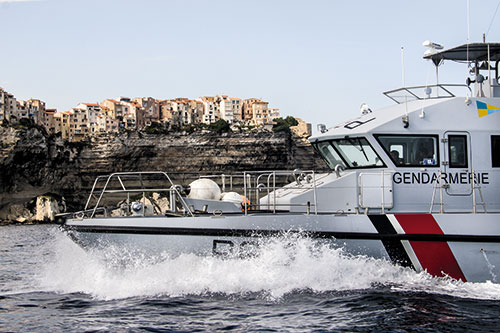
Cooperation
The International Cooperation Direction (ICD or in French DCI) - National Gendarmerie & National police mixed entity) is managing administratively 43 Gendarmerie officers stationed in embassies (Interior security attaché and deputies, assistants and liaison officers), 34 technical military volunteers (employed by the Cooperation and Defence Security Direction [DCSD]), 7 liaison officers abroad out of embassy (gendarmerie advisers, experts, representatives/project leaders) and 2 satellites officers in Paris region. Furthermore, in the "central", it manages also 28 gendarmerie officers, 26 non-commissioned officers and 3 civilian staffs.
The National Gendarmerie maintains bilateral relations with a large number of forces with military status of gendarmerie type. It is represented in several international organizations. At the European level, it is member founder of the European Gendarmerie Force (EGF or in French FGE) and the FIEP (association grouping the European and Mediterranean gendarmerie and police Forces with military status).
The gendarmerie is currently contributing to the outside operations led by:
• the United Nations: MINUSTAH in Haiti, MONUSCO in Democratic Republic of the Congo, ONUCI in Ivory Coast, MINUSMA in Mali, MINUSCA in Central African Republic, UNIFIL in Lebanon;
• the European Union: EULEX Kosovo, EUCAP Sahel (Mali and Niger), EUAM Ukraine and EUMAM RCA;
• France: Barkhane in Chad, Mali and Niger, French forces in Ivory Coast, Sangaris in Central African Republic, Chamal in Jordan.
• the provostship/Military Police trainings are connected with the Command of the provostship or in French "gendarmerie prévôtale" (created in 2013).
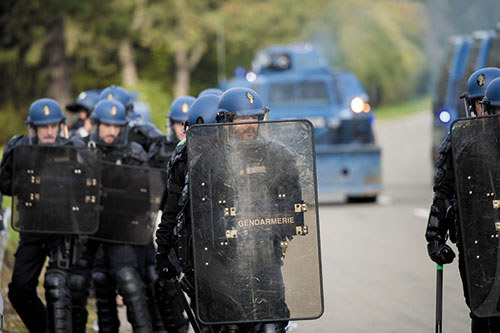
© The iconography was provided by the concerned gendarmeries

